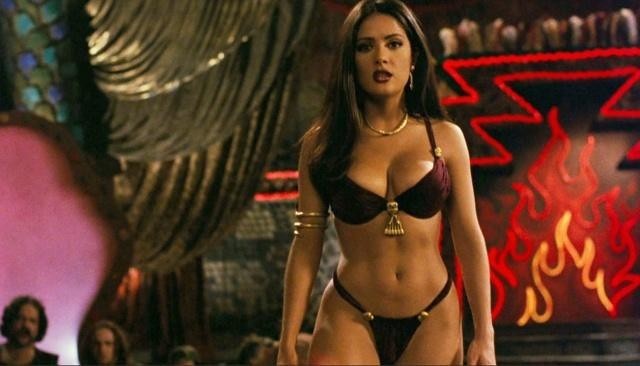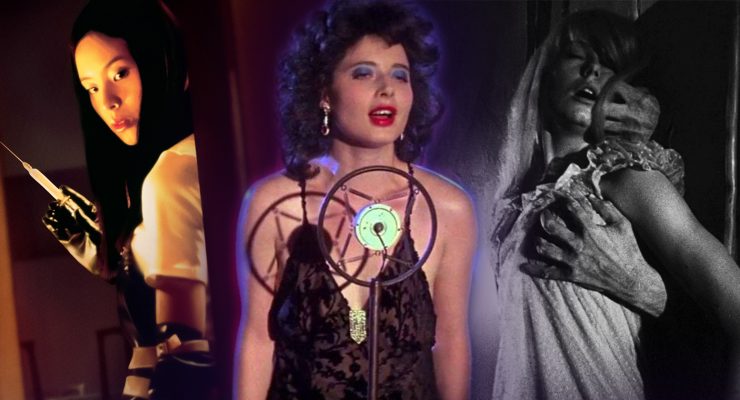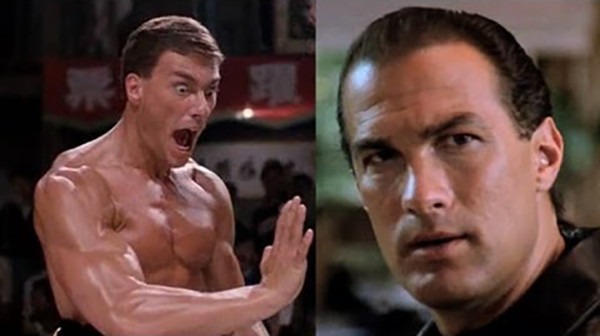Trevor Hogg chats with Academy Award-winning cinematographer John Seale about his collaborations with filmmaker Peter Weir…
While directing episodes for Luke’s Kingdom (ABC, 1976), a miniseries chronicling the colonial hardships in the Australian Outback, filmmaker Peter Weir worked with a camera operator whom he decided to recruit for his next feature film. The creative partnership would span seven pictures and would result in John Seale evolving into an internationally acclaimed cinematographer.
Picnic at Hanging Rock (1975), a turn of the twentieth century tale about a group of schoolgirls who vanish while exploring a mysterious rock formation, features Seale cleverly indicating the passage of time by rotating the camera 180 degrees as the girls make their way up a hill. What proved to be difficult was the handling of the enormous PVSR sound cameras for the interior school scenes. “One was the tilt and crane down shot of the girls coming down the stairs,” recalls the native of Warwick, Queensland. “I had to stand on a ladder and walk down as the camera panned with the girls. I felt safer when I removed my shoes and went with bare feet; I could feel the steps more accurately and was less prone to slip.” Other methods were deployed as well. “It was also a case of having to use non-silent cameras for specific shots which would then necessitate the sound being added in post; that’s something most directors tried to avoid at all costs.”
The Last Wave (1977) reunited John Seale with Peter Weir and cinematographer Russell Boyd. “The water was such an important part of the film for Peter,” recalls Seale regarding the nightmarish story about an Australian lawyer (Richard Chamberlain) who has apocalyptic visions of a great flood while defending his aboriginal clients. “As the operator I wanted to make that water as powerful as Peter wanted. In other words pour it onto the camera.” The desired thematic imagery brought with it major logistical problems. “You would setup a big camera on a big tripod and put a spinner in the front that would keep the water off the lens. We wanted to be more versatile but those spinners were so big and heavy you could never do Steadicam or handheld. There were certain doors and windows that we wanted to walk through but you couldn’t. I racked my brain to work out how we could get water off the lens and still pour as much water in as Peter wanted.” The solution called for some ingenuity. “The device used as the air knife was an industrial paint remover; a bronze bar 7″ long with minute holes [oxy-acetalyne would be ignited and it would burn off the paint]. We used air from divers’ tanks and placed the knife in front of an optical flat in the matt box; with the right pressure it blew the rain off the optical flat.” Seale was impressed with the end result. “It would all go hazy as the air desperately tried to blast the water off the optical flat and then it would clear. It had this wonderful feeling which put the audience right there in the middle of it.”
Gallipoli (1981) was the third and final picture on which John Seale served as a camera operator for Peter Weir; the movie revolves around the relationship between two runners (Mark Lee and Mel Gibson) who end up on the Turkish battlefield where thousands of Australian soldiers are slaughtered during World War I. “On Gallipoli [1981] it was much the same [issue as with Picnic at Hanging Rock],” says John Seale. “The trenches and tents were small, and getting the equipment into those locations was a problem. The Production Designers were good as they built into the sets fly-away walls that enabled us to facilitate the cameras.” The final scene which concludes with a freeze frame image that resembles an iconic war photograph was a real test for the camera crew. “Peter wanted Mark Lee [The Best of Friends] to be running as fast as he could and then to be shot, taking a stance similar to the [Robert] Capa shot of the Spanish soldier being hit by a machine gun bullet. We did not want to slow the actor so we had to move the dolly as fast as possible. The grip power was insufficient so, to the Key Grips consternation, we towed the dolly with a pick-up. I believe we may have smashed the land speed record for an Elemack dolly!”
The Year of Living Dangerously (1982) saw John Seale working as the Second Unit Photographer. The political thriller set in 1965 stars Mel Gibson (Braveheart) as a rookie Australian correspondent assigned to cover the Indonesian civil war between President Sukarno and the communist revolutionaries. The star power of Gibson and Sigourney Weaver (Aliens) was overshadowed by Peter Weir’s casting decision which resulted in an actress portraying a male dwarf. Linda Hunt was lauded with an Academy Award for her role as freelance cameraman Billy Kwan. “When you’re back to the wall and you haven’t found a pivotal character,” states Seale, “thinking out-of-the-box sometimes is the way to go. It so enhanced that film.” The international success of the film helped to launch the Hollywood careers of Peter Weir, Mel Gibson, and John Seale.
Witness (1985) marked the Hollywood debut of Peter Weir, and John Seale who was hired to be the cinematographer for the picture featuring Harrison Ford as an Internal Affairs detective who protects a young Amish boy from a trio of corrupt police officers. “I got a bit of a shock after we shot a scene and I had to dig everybody up,” reveals Seale when recalling an incident that occurred while filming the Amish farm sequences. “I said to the First AD, ‘Come on. The sun is dead right; we can shoot this now. Where are they? We’re finished lunch.’ In Australia once you’d finished lunch you were working. This had a Hollywood lackadaisical thing where lunch was not three quarters of an hour it was an hour and a half.” The cinematographer turned to Weir for assistance. “He got Harrison, all the actors and the First AD, and said, ‘Come on, we’re going to shoot this.’ And we got it.” Seale reciprocated the support when he spontaneously filmed the wind blowing through the corn fields. “The day was windy and Peter looked down the hill and said, ‘Look at that! Can we shoot that Johnny?’ And I said, ‘You bet.’ Suddenly we yelled, ‘Get the cart out of the barn quickly. Get the stand in on that wagon and drive it through. We don’t care which direction. Just drive it through.’ And we shot it.”
“We went to an art gallery in Philadelphia and Peter found this lovely book,” remembers John Seale who along with Peter Weir found cinematic inspiration in paintings by the Dutch masters. “Vermeer had these beautiful window lights in all of his paintings. Most of the windows were on the left. The window light would wash in and die in a couple of the far corners of the room.” The light is used as a cinematic metaphor when John Book (Harrison Ford) is nurtured back to health from a gunshot wound by an Amish woman (Kelly McGillis). “The room is at it’s darkest while he is near death and as the bullet wound heals and he improves, the windows come up very slowly frame after frame so by the time the sun is shining he’s going to be better.”
Not all of the imagery in the drama is subtle, particularly in a memorable death scene when a crooked police officer dies in the grain silo. “Once again it’s Peter’s ability to be able to hurl into the depths of visual imaging,” admires John Seale. “He said to me one day at lunch, ‘I’m trying to find a way to kill somebody beautifully.’” The two men toured the farm scouting possible sites. “We went into the silo a couple of times and he said, ‘I wonder what it would be like to drown in holding corn?’ That’s how it all started.” When Seale’s methods were questioned by the American film crew, the director said to him, “‘Try to remember it this way. As far as I’m concerned this is an Australian film. It’s just that most of the guys have funny accents. You shoot it as you would in Australia.’ I said, ‘Thank you, Peter.’ I shot it that way and we all got nominated [for Oscars].”
The Mosquito Coast (1986) reteamed Peter Weir, John Seale and Harrison Ford. Tired of living in the capitalistic culture of America, inventor Allie Fox (Ford) transplants his family to the jungle of Honduras. Peter Weir had a particular image in mind. “He didn’t want a lovely jungle that you would fall in love with; he wanted an ugly jungle. He said, ‘I want the audience to look in and think, ‘I’d never walk into there.’” Three film stocks were tested. “Eastman Kodak was beautifully fine grained but the colours were very clinical, a lot of blue in them. Ansco was beautiful, more grainy, warm yellows and lovely greens. Fuji didn’t like the greens; as soon as we saw it come up on a one-light print with the other two, it was straightaway Fuji for shooting because it made the greens look grubby.”
Dead Poets Society (1989) was the last collaboration between Peter Weir and John Seale. English literature teacher John Keating (Robin Williams) upsets the academic establishment at a New England prep school with his unorthodox approach to lecturing. Good fortune happened during the filming such as the night scene where the hooded students run through the forest trees and disappear into the mist. Not everything was accidental such as the dramatic concluding image where several of the students salute their fired teacher as he leaves them. “During pre-production he realized that the position of the boys in the classroom had to match what he wanted in the final shots when they stand on the tables to be counted. We would stand them up on the tables, sit them down and then we’d have to go back and play through scenes that were in the earlier part of the film to make sure that those actors at their desks were compatible with those scenes.”
There was no time wasted while the shooting was taking place as Peter Weir set a fast pace. “He would many times print take one and move on unless the actors had a particularly good reason for why they wanted to go again,” remarks John Seale. “He got fantastic performances out of those boys and kept a very high energy level in all the performers because of that.” Having to handle the wild comedic antics of Robin Williams did not hinder the production. “He would put on a little show and then Peter would quietly go, ‘Let’s get this shot.’ Robin would go, ‘Yes, sir.’ And he would fall straight into the character. The only time that Peter let him become Robin Williams was when he did that John Wayne thing in the classroom, ‘Is this a dagger which I see before me?’ He let him go there because you can sense in the character of Keating a manic man lying underneath.”
A heartbreaking moment occurs when Ethan Hawke learns that his roommate portrayed by Robert Sean Leonard, has committed suicide. The natural elements changed the initial idea of where Hawke would be overcome with grief. “On the way [to work] Peter said to the First Assistant Director, myself, and the Script Supervisor, ‘We’ve been in the bathroom before; I don’t want to repeat it. It’s snowing outside. It’ll be a far more interesting scene if he runs out and is sick in the snow.’” The film crew had to improvise. “We didn’t have the equipment to smooth the snow out for a retake. We had to move the tracking track and the dolly across another 20 feet every time so we would be able to use fresh snow. Unfortunately, it had stopped snowing in the afternoon and the visual effects guys had gone home. We rang them, ‘Get back here real quick.’ They drove back to the location, setup the wind machine and put the snow back in so we were able to finish the scene. Part of Peter Weir’s being able to make extraordinary films is his ability to utilize situations.”
After going on to collaborate with filmmakers such as Anthony Minghella (The English Patient), Michael Apted (Gorillas in the Mist), Wolfgang Petersen (The Perfect Storm), Barry Levinson (Rain Man), and Sydney Pollack (The Firm), John Seale remains unwavering in his admiration of his colleague and fellow countryman. “Peter shines as a director who makes his visuals powerful and simple. He was very economical with his coverage of all the films I’ve ever worked with him on. You could throw him an idea, he’d plop his head down and you could see him visualizing the finished picture. He’s one of the only directors I have worked with who could and would do that.”
Many thanks to John Seale for taking the time out of his busy schedule for this interview.
Read more from this interview with Picture Perfect: A conversation with cinematographer John Seale.
Peter Weir Retrospective
Trevor Hogg is a freelance video editor and writer who currently resides in Canada.










